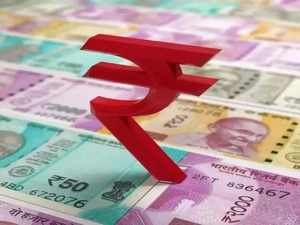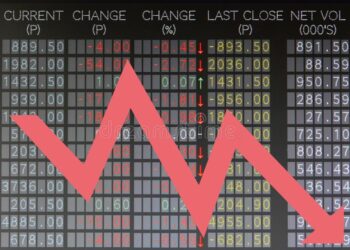The rupee fell sharply against the dollar on Friday, owing to a significant increase in crude oil prices and a drop in jobless claims data in the United States, which has strengthened the case for the Federal Reserve to raise interest rates amid an overheating economy, according to dealers.
The Indian rupee, on the other hand, posted its first weekly gain in four weeks, thanks to strong overseas equities inflows and the Reserve Bank of India’s strong defense of the rupee.
On Friday, the rupee closed at 79.80 per US dollar, up from 79.56 at the previous close. The rupee gained 0.1% last week, demonstrating resilience against a strengthening greenback.
In fact, the Indian rupee outperformed 15 other emerging market currencies last week, ranking first among peers. Last week, most other emerging market currencies fell 0.3-3 percent against the dollar.
“It managed to log the first weekly gain in four and emerged the biggest gainer among Asian peers amid month-end dollar inflows from MSCI rebalancing. In the month gone by, foreign institutions bought worth $6.79 billion in equities and $538 million in debt,” said Dilip Parmar, research analyst at HDFC Securities
According to data released on Thursday, initial jobless claims in the United States fell to a two-month low of 232,000 last week, indicating that the labor market remains tight. On Friday, the dollar index, which compares the US currency to six major rival currencies, reached a new 20-year high of 109.61.
With US inflation remaining near 40-year highs for several months, the Federal Reserve has raised interest rates by 225 basis points so far in 2022. It is expected to raise rates again at its next meeting, which will take place at the end of this month. Higher US interest rates cause the dollar to strengthen, reducing global investors’ appetite for emerging market assets.
“Hawkish Fed bets and firmer US 10Y UST yields are keeping the dollar on bid. At the same time, the Fed is also clear that future trajectory of rate hikes will be data dependent and thus every major US data holds key importance in creating volatility in the market,” Kunal Sodhani, Vice President, Global Trading Centre, Shinhan Bank said. Sodhani sees a range of 79.30-80.20 per dollar over the near term.
Meanwhile, speculation about a reduction in output by major oil producers and exporters caused global crude prices to skyrocket.
Brent crude futures rose $2.72, or 2.9 percent, to $95.08 per barrel by 0900 GMT (2:30 pm IST), while US West Texas Intermediate (WTI) crude futures rose $2.62, or 3%, to $89.23, according to Reuters.
Concerns about weak global growth, exacerbated by new Covid restrictions in China, have also dampened demand for emerging market currencies such as the rupee, according to traders.
Forex reserves
According to data released on Friday, the RBI’s headline foreign exchange reserves were $561.05 billion on August 26, down $3 billion from the previous week. The drop was primarily due to a $2.6 billion decrease in foreign exchange assets, which fell to $498.65 billion.
The Reserve Bank of India’s reserves stood at $573.88 billion as of July 29. To prevent excessive volatility in the rupee, the central bank has heavily intervened in the currency market through dollar sales.
Since late February, when Russia invaded Ukraine, reserves have fallen by around $70 billion.
The rupee hit a new low of 80.13 per dollar earlier this week. So far in 2022, the domestic currency has fallen 6.8 percent against the US dollar.
In an interview on Friday, RBI Governor Shaktikanta Das stated that the country’s foreign exchange reserves were strong, allowing the rupee’s exchange rate to remain stable.
Source:BS
.







 Finance
Finance







